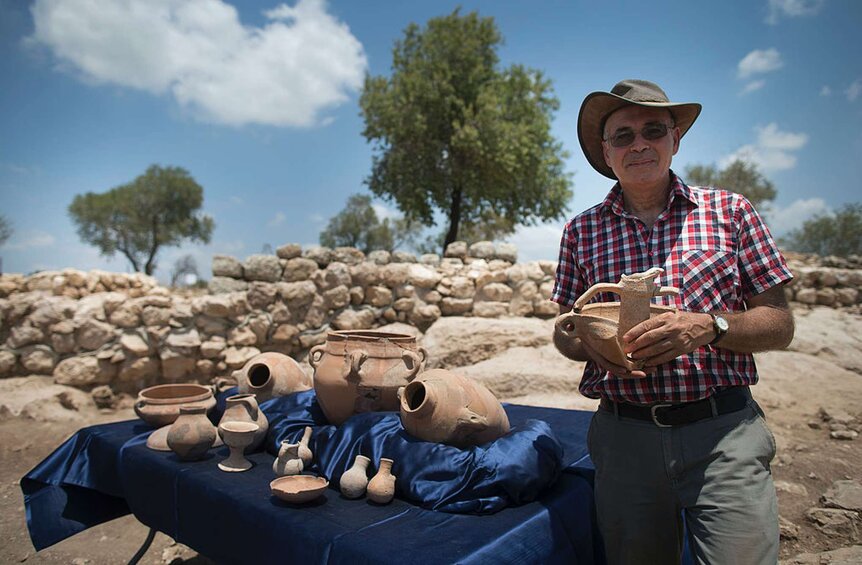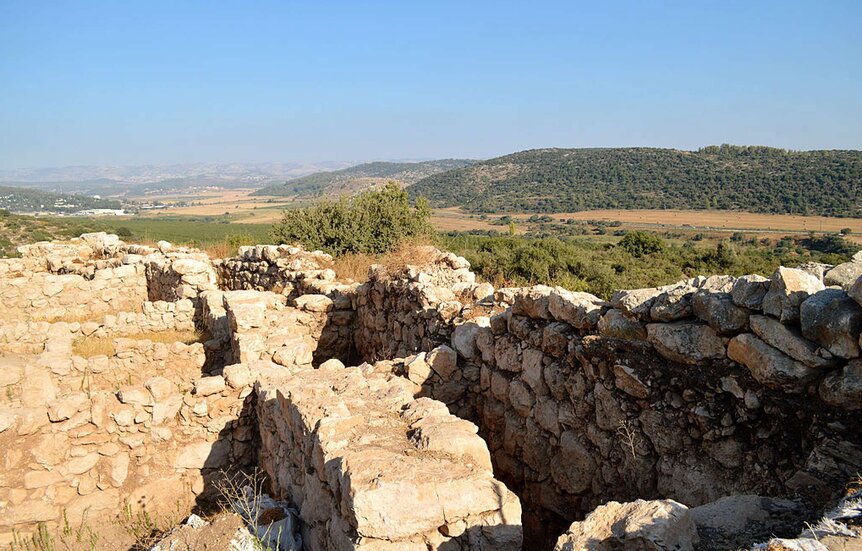Create a free profile to get unlimited access to exclusive videos, sweepstakes, and more!
Was this 3,000-year-old clay head made to represent the face of God?

It's not every day that scientists unearth a rare relic that might be a representation of the face of God, but a team of archaeologists in Israel believes they've accomplished just that.
Dating back nearly 3,000 years, a 2-inch-tall clay head could be an intriguing interpretation of the visage of Yahweh, the ancient Hebrew name for God. This is a divine portrait that Israelites were strictly forbidden to make according to one of the Ten Commandments in the Book of Exodus, which states that "you shall not make for yourself an image in the form of anything in heaven above or on the earth beneath or in the waters below."
Led by Prof. Yosef Garfinkel of the Institute of Archaeology at Hebrew University, the crew of scientists found a small, strange-looking male head in the ruins of an expansive palace building at the Khirbet Qeiyafa excavation site in Israel. Their findings are being published this fall in the online journal Biblical Archaeology Review.
This is the first divine figure of its kind discovered at Khirbet Qeiyafa, but other artifacts resembling this multi-featured face date back to the same time period and have been located at historical preserves in burial tombs, ceremonial chambers, and religious temples across Israel.
"Because the base of the figure's neck is well worked, the head likely was attached to another object, either a body or a pottery vessel," Garfinkel explained. "With a flat top, the head has protruding eyes, ears and a nose and because the ears are pierced, the figure may have worn earrings. Around the top of the head is a circle of holes, which may be part of a headdress."
To support his claim, Garfinkel notes that the location where the relic was unearthed appeared to be a formal building important to the people of that time, and that citizens of the period did worship Yahweh. He also believes that this sacred object was once part of a larger statue depicting Yahweh atop a horse, as has been interpreted and envisioned in various biblical passages.
According to the findings, expeditions at Israel's Tell Moza dig site have recently exposed two head and horse figurines from respected temples or burial chambers, which also herald from the same time frame. Garfinkel is convinced that these figurines originally depicted Yahweh riding a noble steed.
"As the believer sees the face of the idol, in that very moment the idol also looks at the believer. This is a metaphysical moment, a contact between earth and heaven, the core of the religious experience," Garfinkel said. "Across the ancient Near East, it was a common practice for people to be able to see an image of a deity within a temple or other important place."
Garfinkel theorizes that restrictions on Israelites depicting Yahweh weren't enforced until much later, closer to the 8th century B.C.
But whenever theological discussions are presented, not everyone buys into unofficial theories. Archaeologist Oded Lipschits of Tel Aviv University, co-director of excavations at Tell Moza, and his colleague, archaeologist Shua Kisilevitz of Tel Aviv University, have vehemently rejected the idea that Garfinkel's Yahweh head is an interpretation of the face of God.
"Although we cannot rule out the possibility that the human heads from Moẓa and Qeiyafa depicted gods, they have no markings, symbols or attributes — such as horns, crescents, bulls — found on figures and visual representations throughout the ancient Near East, that would identify them as divine figures," Lipschits and Kisilevitz told Live Science. "Furthermore, when gods were depicted on animals, they did not sit on them — they do not need the transport — they stood on them."
They also noted that archaeological and historical research indicates that 3,000 years ago, Yahweh was not being worshipped in the area.
"Even if we were to identify the figures as depictions of gods, they could not have represented Yahweh, as he did not appear in the region before the 9th century B.C.," they explained. "Throughout the period, at least until the very end of the 7th century [B.C.], a pantheon of Canaanite gods was worshipped throughout the Land of Israel. This pantheon was initially headed by the god El, and from the 9th century [B.C] Yahweh became the chief god. Garfinkel’s attempt to relate one of the heads to the small horse disregards the different production technique and scale of these items."
Whether this ancient trinket was truly the face of Yahweh, or simply another deity worshipped by the Israelites, scientists will continue to debate. When it comes to meeting our maker, we'll let the experts decide!





























